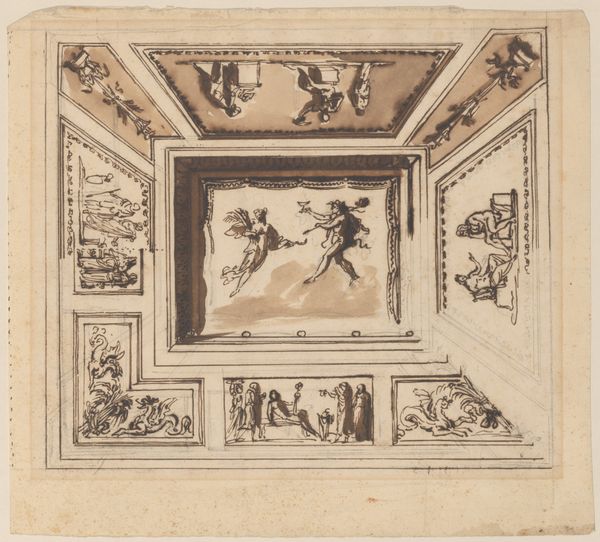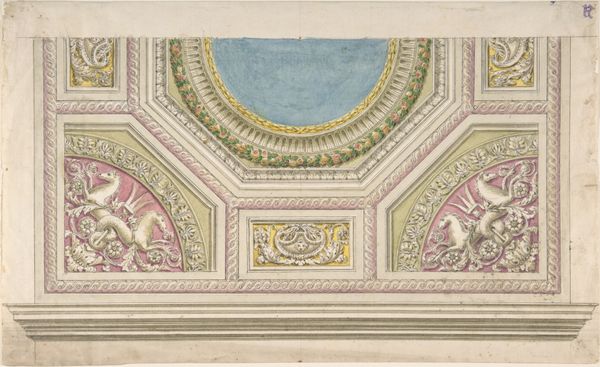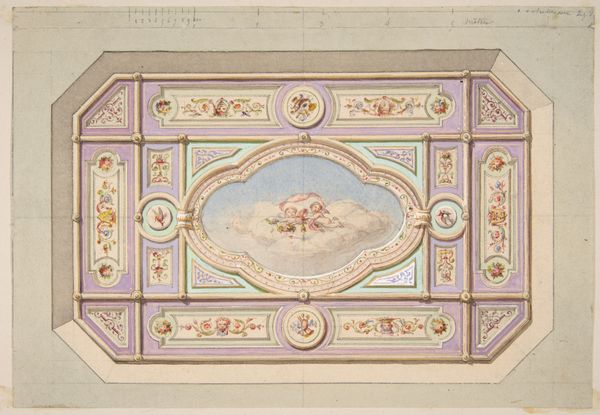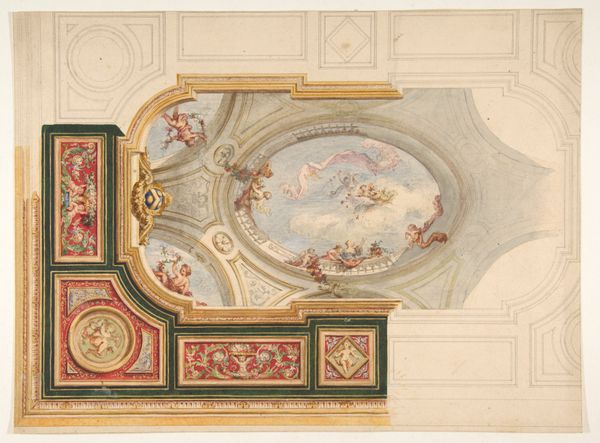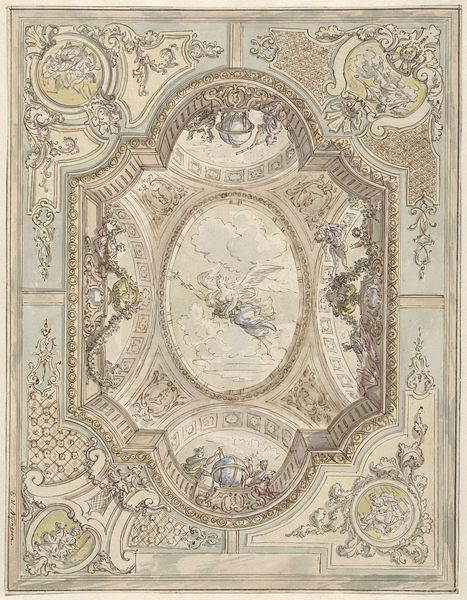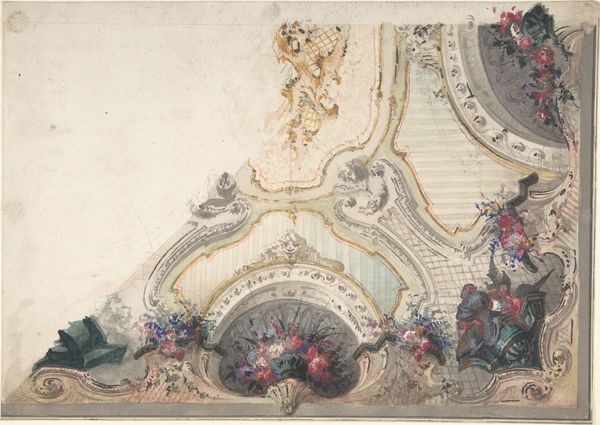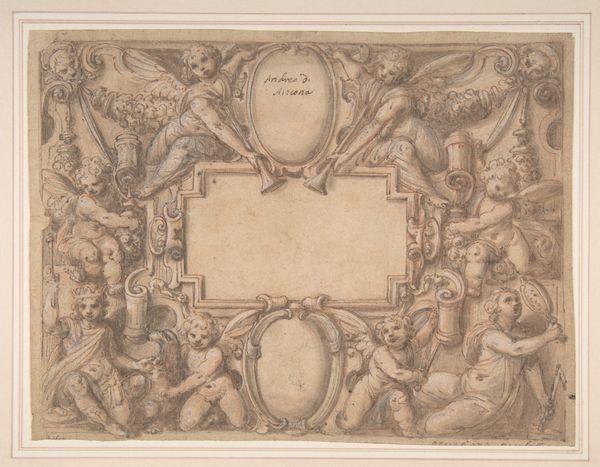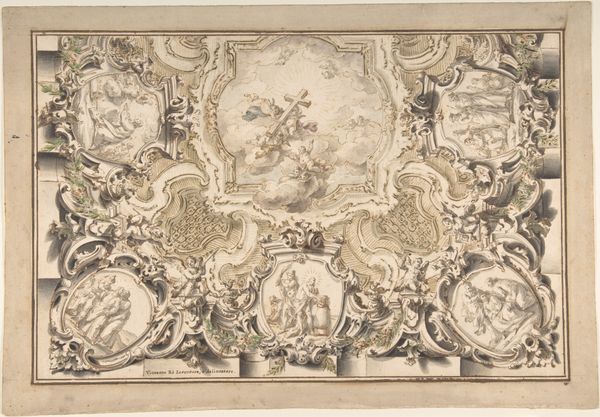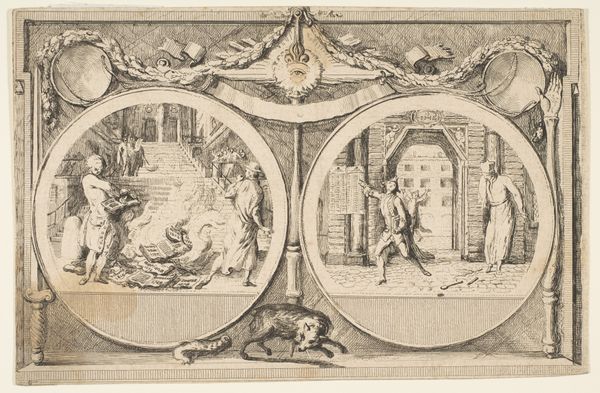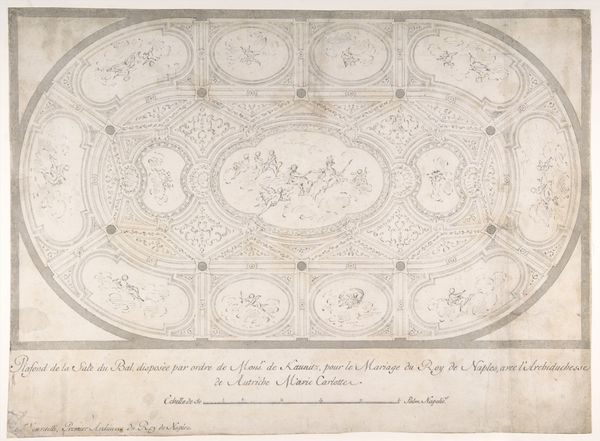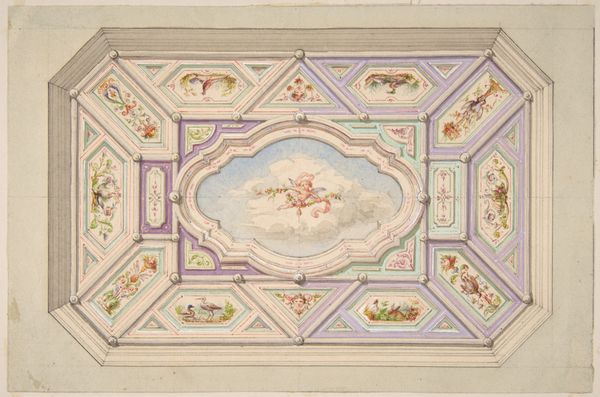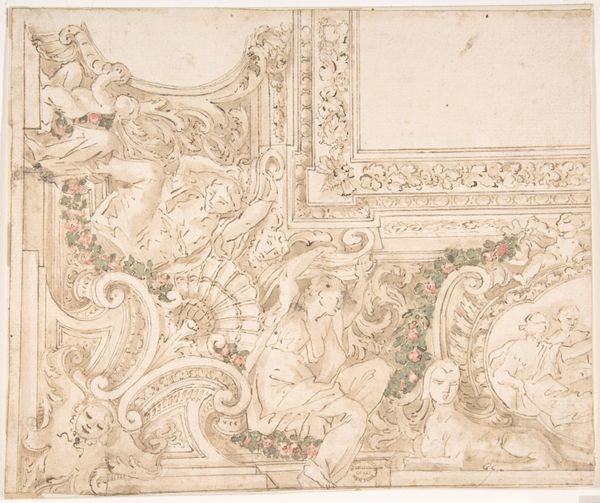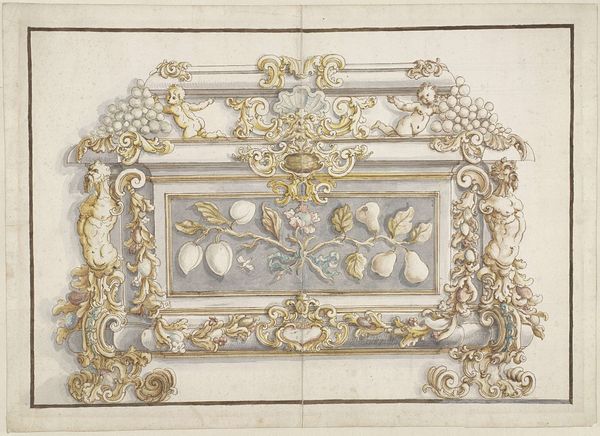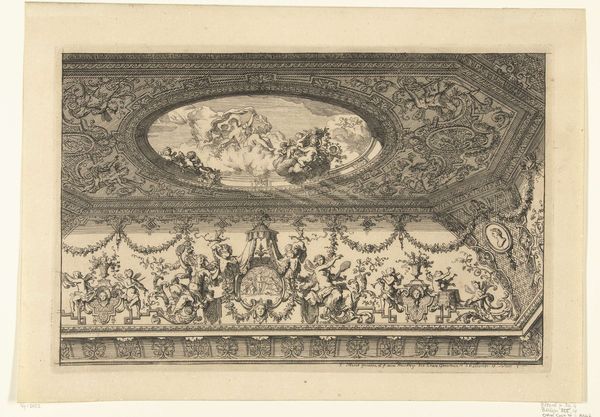
Design for a Ceiling with Decoration Related to Virgil's Sixth Canto 1758 - 1823
0:00
0:00
drawing, print, watercolor, architecture
#
drawing
#
allegory
#
neoclassicism
# print
#
watercolor
#
geometric
#
history-painting
#
watercolor
#
architecture
Dimensions: 8 x 10 5/16 in. (20.3 x 26.2 cm) irregular borders
Copyright: Public Domain
Editor: This delicate drawing, "Design for a Ceiling with Decoration Related to Virgil's Sixth Canto," was created between 1758 and 1823 by Felice Giani using watercolor, among other media. It has a quiet elegance. I wonder, what is the message this design conveys about the aspirations of its time? Curator: The design speaks volumes about Neoclassical aesthetics and their deep entanglement with power and privilege. Virgil’s Sixth Canto, which it references, offers an allegorical vision of cosmic order and imperial destiny, hugely popular during the rise and fall of empires, like the Napoleonic one that Giani lived through. Editor: How so? Curator: Notice the idealized figures and geometric motifs? Neoclassicism wasn't just a revival of classical forms; it was strategically used to create a visual language for empire, justifying social hierarchies as reflections of an inherent ‘natural’ order. Think of Jacques-Louis David painting Napoleon. How do you see gender represented here? Are women and men portrayed with equal agency? Editor: I see that women, where present, appear more allegorical and less like actors with agency in the scene. It makes me think about whose stories get told, and whose get erased, through art. Curator: Exactly! This design, while beautiful, participated in constructing and reinforcing dominant narratives that privileged certain bodies and perspectives. Reflecting on such power dynamics within seemingly innocuous decorative arts enables us to question contemporary systems of representation as well. Editor: This really changes how I see the piece; it is not just pretty ornamentation; it’s an artifact embedded in social narratives! Thank you for broadening my understanding! Curator: And thank you for the insight that challenges my perspective! Art is not created in a vacuum, after all, and we can use these historical contexts to understand ourselves better.
Comments
No comments
Be the first to comment and join the conversation on the ultimate creative platform.
